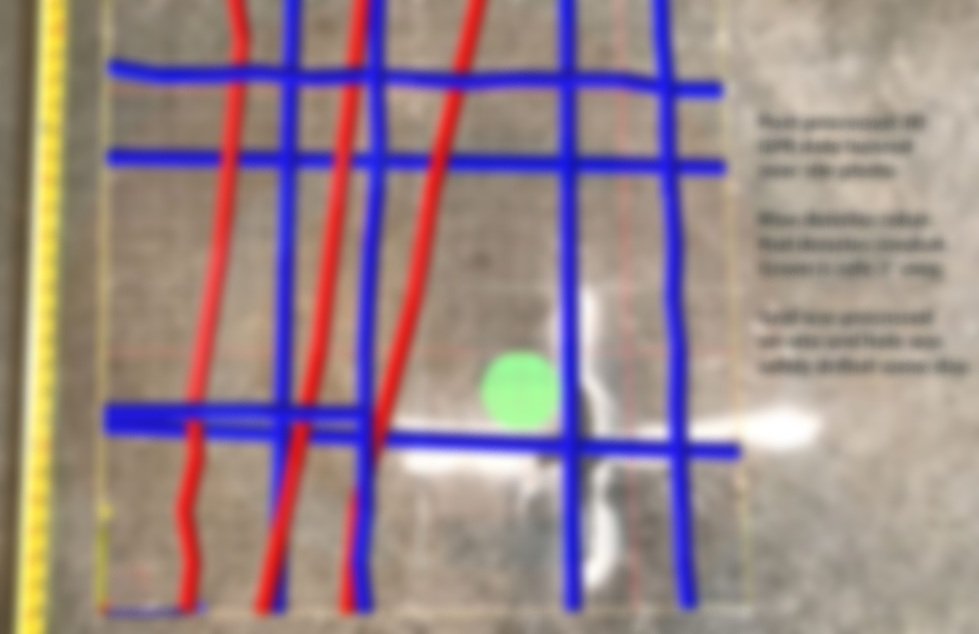Ground Penetrating Radar (GPR)

Invest today to see results in the future.
At Diamond Coring, we provide top-tier Ground Penetrating Radar (GPR) concrete scanning services, delivering unmatched precision and reliability. Our expert team uses state-of-the-art GPR technology to offer detailed and comprehensive subsurface imaging, ensuring you receive high-quality data for your project. Whether you're planning construction or utility installation our GPR services help you avoid costly surprises and ensure safe, efficient operations. Trust Diamond Coring for exceptional quality in GPR scanning solutions.
Our Ground Penetrating Radar Scanning Services
-
Utility Locating
Identify and map underground utilities, including water, gas, electrical lines, and telecommunications cables, to avoid costly and dangerous disruptions.
-
Concrete Scanning
Locate rebar, post-tension cables, conduits, and voids within concrete structures to ensure safe and efficient cutting, coring, and drilling.
-
Ground Penetrating Radar (GPR) is a non-invasive method used for detailed imaging within concrete structures. It detects embedded elements such as rebar, post-tension cables, conduits, and voids without the need for drilling or digging. This advanced technology ensures a safer and more cost-effective solution for locating these critical components within the concrete.
-
Detailed Imaging:
Our GPR technology delivers precise, high-resolution images, enabling the detection of a wide variety of subsurface features, including pipes, cables, rebar, voids, and geological formations.
Non-Destructive:
GPR scanning is a non-intrusive method that ensures no damage to the surveyed area, preserving the integrity of your site.
Versatile Applications:
From construction sites and infrastructure projects to historical preservation and environmental studies, GPR is suitable for multiple industries and applications.
Safety First:
By accurately locating underground utilities and potential hazards, GPR scanning minimizes the risk of accidental damage and enhances on-site safety.
-
Ground Penetration Radar scanning emits high-frequency electromagnetic pulses into the ground. These electromagnetic waves reflect upon reaching different subsurface materials (soil, rock, etc.). These reflected signals are processed and used to create a detailed image of the subsurface.
-
No. Due to the electromagnetic scanning process of GPR, the ground will not need to be cut into. GPR is non-destructive.
-
GPR can detect materials such as concrete, metal, steel, rock, and pavement.
-
At Diamond Coring Company, Inc., we employ advanced GPR technology to provide critical insights into utilities and structural elements within concrete structures. Our GPR services offer detailed two- and three-dimensional images without radiation exposure. However, accuracy of interpretations can vary based on material properties. Thus, Diamond Coring Company, Inc. does not guarantee interpretation accuracy and disclaims liability for any related loss or damage.
GPR scanning detects the center and approximate depth of targets like rebar, conduits, or post-tension cables but cannot differentiate between them. Additionally, EM locating equipment is used as a secondary measure, requiring active power through lines.
While we employ advanced equipment, not all buried utilities can be detected, especially non-conductive lines (e.g., PVC, water lines) or those without accessible connection points. Accurate detection requires lines that can transmit an electronic signal.
Diamond Coring Company, Inc. is not responsible for any loss or damage resulting from the use or reliance on our data or reports. Clients must ensure access to scan areas by removing obstructions within 4" from the scan area and keeping it dry. Do not saw or drill within 1½" of any marks. Clients are also responsible for providing necessary scaffolding and lifts. A client representative should be present for review post-scanning.





